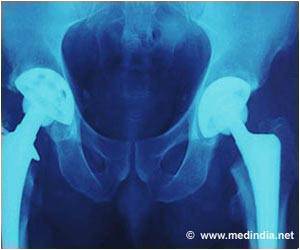Multi-component home-based physical therapy interventions improved mobility among older adults with hip fracture, reveals a new study.

‘Hip fractures are a debilitating injury that can severely and permanently impact mobility.
’
Read More..




Jay Magaziner, Ph.D., MSHyg, Professor and Chair of the Department of Epidemiology and Public Health at UMSOM was the Principal Investigator for this research and Rebecca L Craik, PT, Ph.D., FAPTA, Dean of the College of Health Sciences at Arcadia University was Co-Principal Investigator. Read More..
The research was a multidisciplinary partnership involving investigators from epidemiology, physical therapy, geriatrics, orthopedics, gerontology, health economics, biostatistics, and health services research. It was conducted at UMSOM, Arcadia University, and UConn Health at the University of Connecticut. The research compared two different types of multi-component home-based physical therapy programs, both of which showed significant improvements in the ability to walk but not enough to be independent in the wider community.
This research involved 210 participants 60 years old and older recovering from hip fractures. One group received aerobic, strength, and balance training. The other group received nerve stimulation and active range of motion exercises. Both groups received as many as three regular weekly home visits from a physical therapist over a 16-week period. In addition, the participants received nutritional counseling and daily vitamin D, calcium, and multivitamin supplements.
The research measured the participants so-called "community ambulation," which is the ability to cross a street before traffic light changes. To determine community ambulation, participants were timed to see how far they could walk 300 meters (approximately the length of 3 football fields) in a six-minute period after the 16-week treatment. Researchers found that after all the regular in-home interventions, 23 percent of the participants in the group receiving aerobic, strength and balance training could walk more than 300 meters in six minutes. In the other group, which received nerve stimulation and range of motion exercises, 18 percent of the participants could walk 300 meters or more in a six-minute timeframe, a difference that was not considered statistically significant.
"Both groups showed significant improvement, which highlights the importance of multi-component home-based interventions," said Dr. Magaziner. "The equal level of professional attention both groups received may explain why the difference in the percentage of patients becoming community ambulators between the two groups was relatively small."
Advertisement
"Many older adults face challenges regaining mobility after hip fracture. We were pleased that in this study, a sizeable number of participants achieved community ambulation capacity. However, much more needs to be done to develop and carry out targeted and creative rehabilitation programs that will benefit greater numbers of older adults who strive to become community ambulators following hip fracture." said Richard Fortinsky, Ph.D., Professor and Health Net, Inc. An endowed chair in Geriatrics and Gerontology at UConn Health, who was the study's lead researcher at the UConn Health Campus of the University of Connecticut.
Advertisement
"The number of hip fractures throughout the world is increasing, and nearly half of those individuals who have a fracture will not be able to walk independently a year later. To date, no single intervention has been able to provide a remedy to this growing problem. Our research here at the University of Maryland can help set a clear path for treating the most challenging mobility cases," said UMSOM Dean E. Albert Reece, MD, PhD, MBA, who is also the Executive Vice President for Medical Affairs, University of Maryland, and the John Z. and Akiko K. Bowers Distinguished Professor.
Source-Eurekalert









